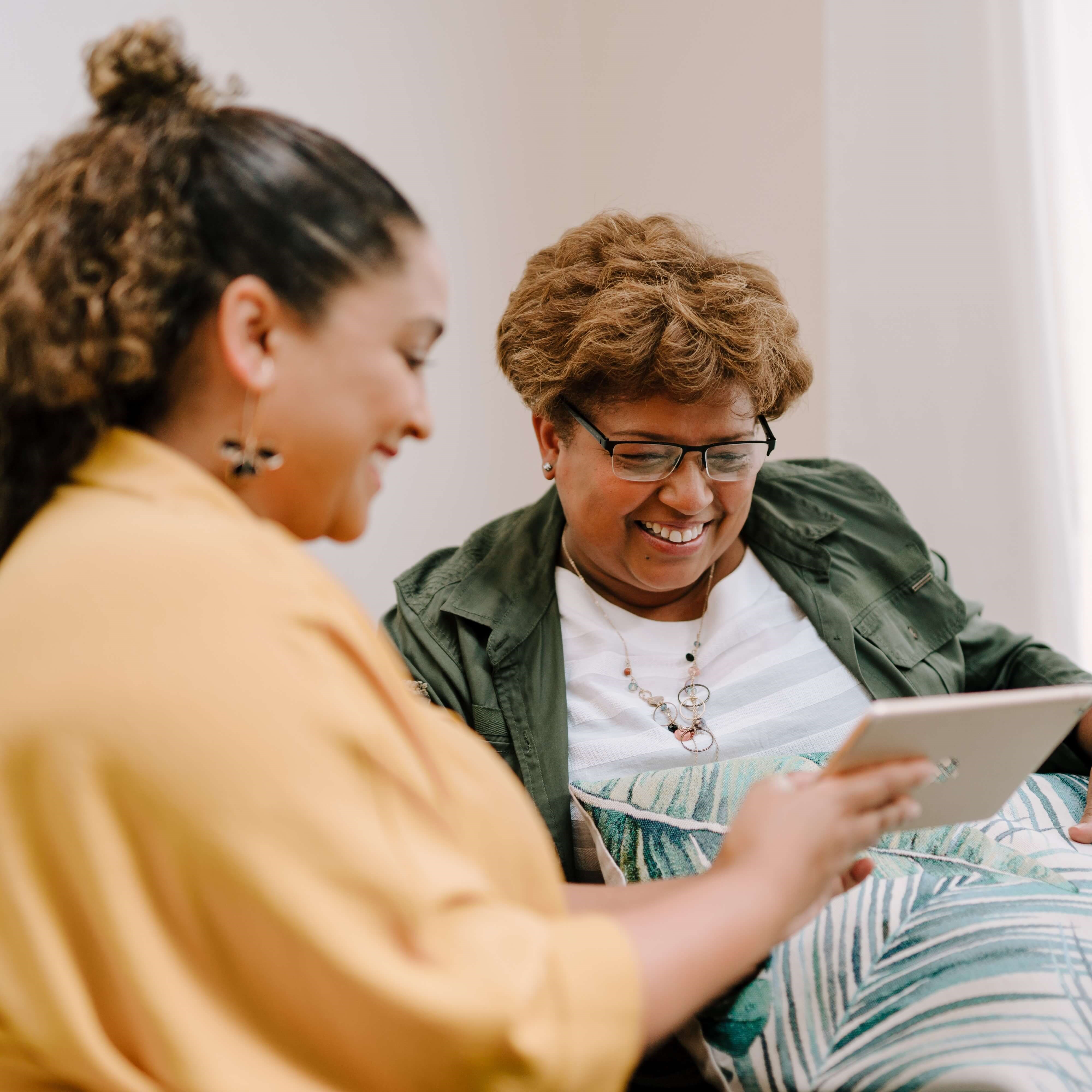Bone health checklist
It's never too early – or too late – to start taking action for your bones. You can use this checklist to start taking action today, and reduce your risk of osteoporosis and broken bones.
Check your risk
Use our risk checker to identify your risk factors and ways to look after your bones.

⬚ Maintain a healthy body weight
If you’re underweight or overweight, your risk of osteoporosis and broken bones increases. That’s why, to protect your bones, you should aim to keep your body weight in the range that is healthy and appropriate for you.
An easy way to work out whether your body weight is in the healthy range is by calculating your body mass index (BMI). Your BMI can tell you whether you are underweight for your height, just about right, or overweight.
You can easily calculate your BMI yourself, by following these steps:
- Measure your height in metres (h) and multiply the figure by itself
- Measure your weight (w) in kilograms
- Divide your weight by the number you calculated in step 1 (your height squared) i.e. BMI = w/(h x h)
- Check below to find out what your BMI means.
| What does your BMI mean? | |
| If your BMI is 18 or less | You're below the healthy range |
| If your BMI is 19 to 24 | You're at a healthy weight |
| If your BMI is 25 or more | You're above the healthy range |
⬚ Lead an active lifestyle
Being physically active and doing exercise helps to keep bones strong and healthy throughout life. That’s because your bones are living tissues that get stronger when you use them.
Find out what exercise and activities are good for your bones.
⬚ Eat well for your bones
Eating and drinking the right things can help support your bone health at every stage of your life.
Calcium and vitamin D are two nutrients that are well-known to be important for bones. But there are many other vitamins, minerals and nutrients that are vital to help your bones stay healthy and strong.
Find out how the things you eat and drink can help your bones.
⬚ Get enough vitamin D from the sun
Vitamin D helps your body absorb and use calcium, which gives bones their strength and hardness.
It also helps your muscles stay strong, which reduces your risk of breaking a bone in a fall.
There are three ways you can get vitamin D:
- from safe sunlight exposure
- from your diet
- from vitamin D supplements, if needed.
⬚ Avoid smoking
Smoking slows down the cells that build bone in your body. This means smoking could reduce your bone strength, and increase your risk of breaking a bone.
If you're a woman, smoking also increases your chances of an earlier menopause. Postmenopausal women have an increased risk of osteoporosis and breaking a bone.
People who smoke are also found to be at higher risk of breaking a hip as they get older.
Rest assured, though, it’s not too late. If you give up smoking, your risk of breaking a bone begins to return to normal.
For advice about giving up smoking, speak to the practice nurse at your surgery, or visit the NHS website.
⬚ Drink alcohol in moderation
Drinking a lot of alcohol increases your risk of osteoporosis. In the short term, it also makes you unsteady on your feet, making you more likely to trip, fall and break a bone.
The government recommends you drink no more than 14 units of alcohol a week.
In the UK, one unit is equal to eight grams of alcohol. To help you picture what this looks like, the following drinks contain one unit of alcohol:
- a single pub measure (25ml) of whisky, gin or brandy
- half a pint of beer or cider
- a quarter of a pint of strong beer or cider.
You may be surprised to know that one small glass (125ml) of table wine contains one and a half units.
Try to stick to this recommendation. And don’t save up all your units for the weekend – spread them out over several days instead.
It’s also important to have regular days where you don’t drink at all.
⬚ Maintain good balance and coordination
This reduces your risk of slipping, tripping or falling – and potentially breaking a bone.
Although falling feels like something you have no control over, this isn't always the case. Whatever your fitness levels, there are exercises and activities you can do to improve your balance and coordination, and protect your bones.
⬚ Understand your risk of osteoporosis and broken bones
Finding out if you have any risk factors for osteoporosis can help you identify things you could do or change to help protect your bones. For a quick and easy way to do this, use our osteoporosis risk checker.

 Search
Search
 Login
Login


